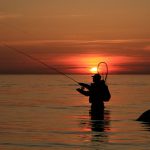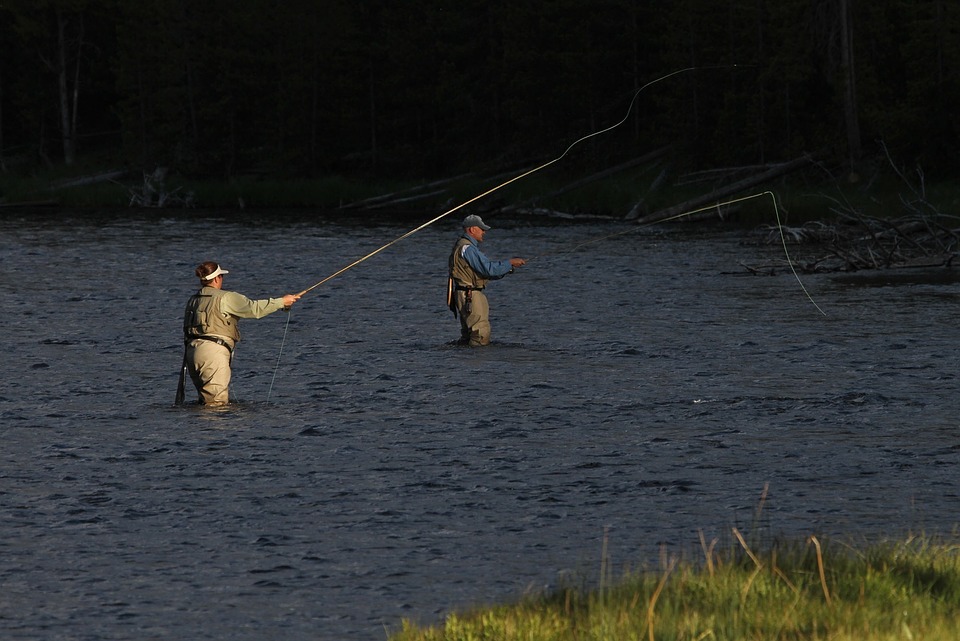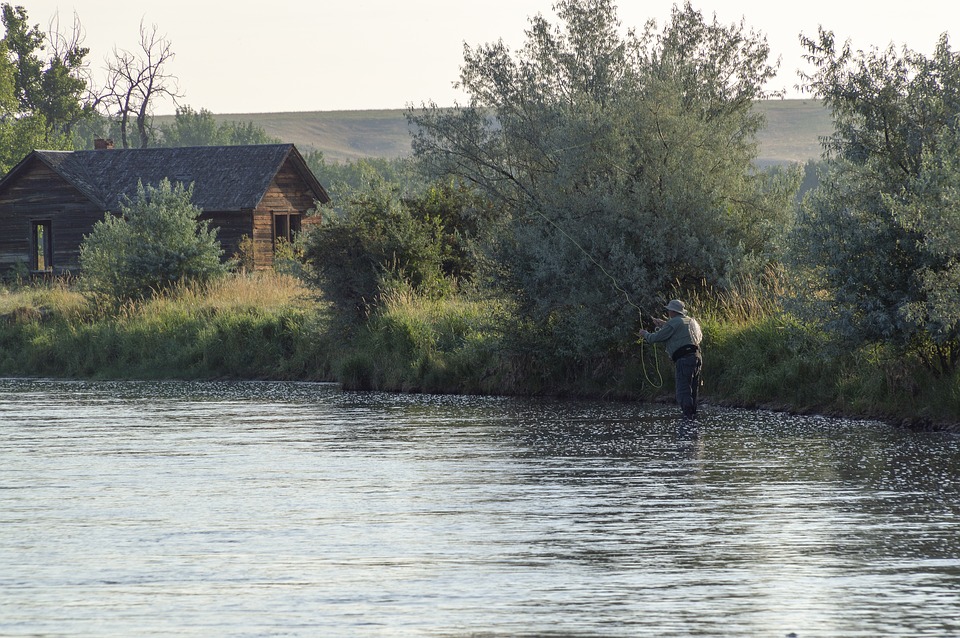5 Basics of Fly Fishing You Should Know

Have you recently developed a liking for fly fishing and want to learn it because you are an ardent camper/hiker and think it’s a great activity to do in the mountain streams, rivers and lakes during camping trips? Well, you’re absolutely right. Fly fishing is indeed a fun and amazing activity that campers and hikers should learn and do, so as to forget all worries of life in the serene and beautiful vicinity of nature. Here are some basics for you.
1. The Beginning
Since fly fishing presents you a lot of new terms and gear that is different from that of traditional fishing, you may find it confusing at first. It’s definitely not a hobby you can simply start one fine day and return home with piles of trout or bass in the evening. You’ll have to have a few trips just to know the gear and how to cast properly, together with how to choose the correct spots.
Taking an experienced fly fisher and the best fly fishing kit for beginners certainly is of a great help.
2. Basic Gear
The basic gear is the one that you absolutely need for starting your adventure, while there is a lot of fly fishing gear out there as such and not many of them are really needed.

The basic gear consists of:
Fly Reel and Fly Rod
Fly reel and fly rod are the very basis of your other fly fishing gear. Prices of both vary depending on the material they are made from and the quality of their construction. It’s recommended to avoid plastic reels which are cheap but break easily and perform poorly. Regarding fly rods, graphite rod are the best.

Fly Fishing Line That Contains Fly Line, Backing, a Tippet and a Leader
Backing is used to fill up the reel (known as arbor) to provide additional length for a longer fish run. Backing is usually brightly colored and thick so as to be easily visible in water. The backing is the longest part of the line.
Fly fishing setup differs from standard fishing setup because:
- The end of the line has no weight but only a fly which is quite lightweight. But the weight is offered by the line itself, hence fly line is much thicker.
- The leader and tippet come into picture when it’s about presenting the bait (the fly) on the water. The purpose of the leader is transition from the thick fly line to the thin tippet which starts thick to match the line and then tapers down to a much thinner size. The leader prevents the heavier line from “slapping” on the water and frightening the fish, while the tippet attaches the fly to the leader. It’s nearly invisible in the water with the fly at its one end and the leader at the other. Thus fish cannot see anything attached to the fly.
Flies
When it comes to flies, there are dry flies that look like flying insects, nymphs that resemble aquatic creatures and streamers which also look like aquatic creatures but are larger than nymphs.

So, you can see that you don’t need a lot of things to start with. But take care of choosing the best fly fishing kit for beginners. Cheap fly fishing gear can cause frustration because it either poorly performs or breaks down.
3. Accessories
Apart from the basic gear, some other accessories are highly recommendable because they can make your learning process a lot more enjoyable.
Fly Fishing Net
This is useful to grab the fish and also to protect it.

Polarizing Sunglasses
These will protect your eyes from the sun and also from the glare from the water, so that you can see well.
Fly Fishing Vest
This is useful to hold your gear and keeping everything at hand when you need it.
Waders
These will enable you to get anywhere the water. Without them, you’ll either be wet, or fish from the shore or rocks.

4. Assembling Your Fly Fishing Gear
Here are steps for assembling your fly fishing gear.
- First attach your reel to the rod. Typically it slides on the rod and locks in place.
- Retrieve your backing and pull off around 100 feet. This will differ based on your reel weight and spool size. The key is to spool enough backing so as to allow the backing and line to fill the arbor.
- Pull off around 2-3 feet of fly line and tie it to the backing with an Albright knot.
- Next pull off another 30 yards and clip it.
- To get the correct amount of backing, spool the backing and fly line on the reel, but initially do it in reverse. Begin with the fly line. You’ll need around 30 yards of fly line.
- Keep the line taunt while spooling it and let the backing/line go evenly across the arbor/spool. The line will spool from the reel’s bottom.
- Keep spooling the line till it gets near but doesn’t touch the outer rim. When it’s close, trim the additional backing. Remove the fly line and backing.
- With an arbor knot, tie the backing to the arbor. Keep the line taunt, spool it leveling spreading it across the reel. Don’t forget to spool from the bottom.
- With a braid knot, make a loop at the fly line’s end. It will allow you to easily tie the leader loop to the fly line, so that you can change the leaders quickly.
- Tie the tippet to the leader with a double or triple surgeon’s knot.
- Lastly attach a fly to the tippet with an improved clinch knot.
That’s it!

5. Overhead Cast
As such there are many fly fishing casts, but overhead cast is not only the most basic cast but also a foundation for several other casts. Thus once you master it, it’s easy for you to learn the other casts.
The basic concept in the overhead cast is to bring the fly line overhead and behind you and then cast it in the front towards your target area. Watching an expert fly fisher doing overhead casting is the best way to learn it.
Some common problems you may encounter are not being able to start and stop quickly enough, problems with timing and too much wrist motion that can keep the line from remaining horizontal and avoid tight loops that add power to the cast. These will go slowly as you keep on practicing.

I am sure, you have become eager to start fly fishing. So, what are you waiting for? Get the best fly fishing kit for beginners and start your adventure.
















